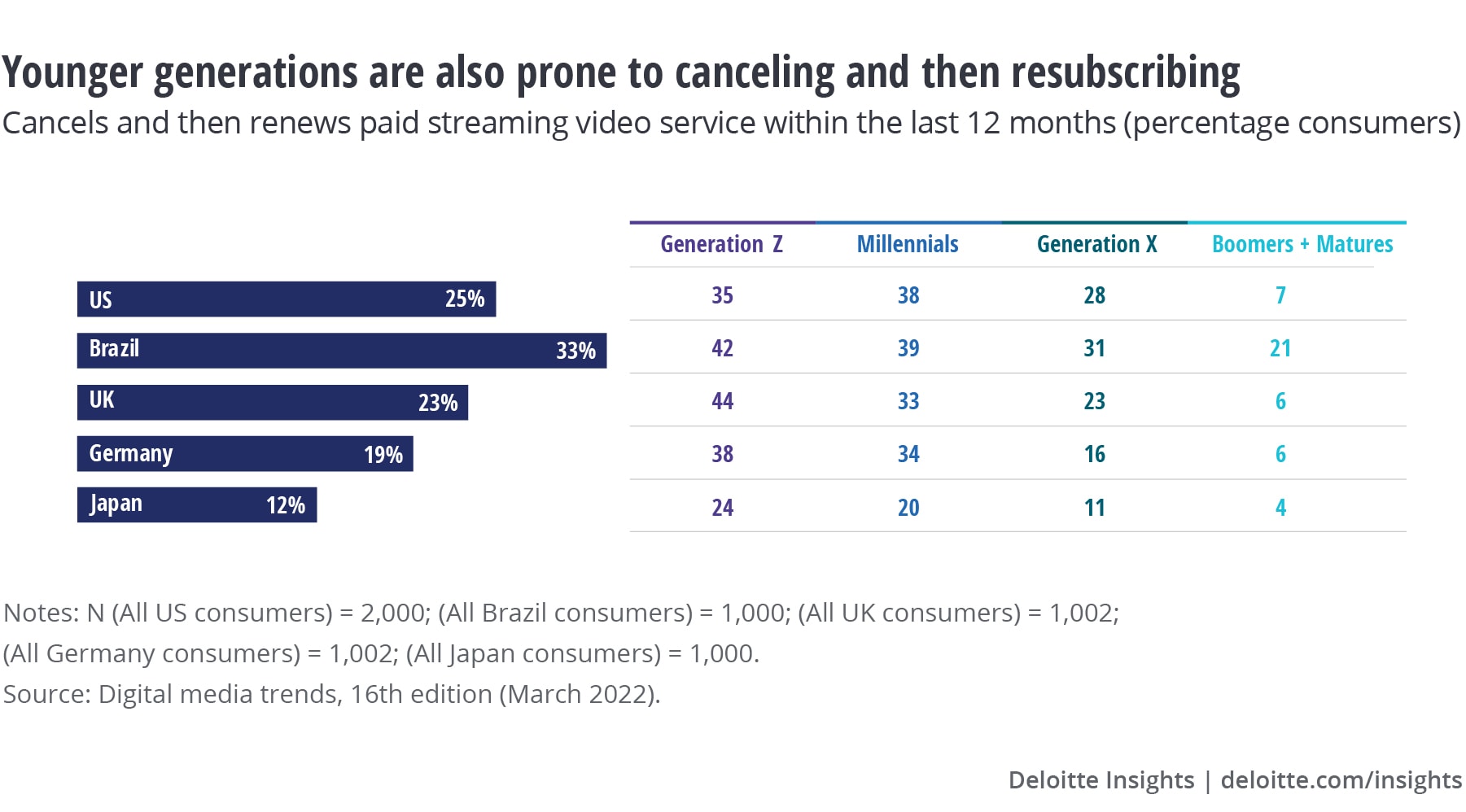Evolution of the media supply chain has been saved

Perspectives
Evolution of the media supply chain
The rise of cloud-based content creation and delivery
In a media environment almost defined by disruption, creators and studios are persistently pressured to enhance content production and delivery across the supply chain. Cloud studios are a solution for content creation and production that can help media and entertainment companies collaborate and respond to trends more effectively.
Explore content
- Post-COVID media content production and delivery
- 3 central challenges around cloud production
- Benefits and roadblocks
- Two key challenges with adoption of cloud studios
- Get in touch
Adapting to post-COVID media content production and delivery
Media and entertainment is one of the most frequently disrupted industries, with content consumption expected to persistently rise, fueled by cross-industry innovations like autonomous vehicles, seamless one-click shopping, digital assistance, virtual reality, 5G adoption, and more. Media companies are under constant pressure to evolve and become more efficient. The latest trends are forcing traditional studios to invest in their supply chains and provide consistent content production and delivery to streaming platforms. This added investment behind the next evolution of the supply chain is increasingly important as churn rates for paid streaming services remain high, especially among younger generations. Younger generations are also prone to move among streaming services, with about 38% of US millennials cancelling and resubscribing to streaming services within 12 months. A key driver of this mobility is availability of the content they want to watch.

The amount of content produced is growing year over year and shows no signs of slowing down. The world of increased consumer power and hyper-personalization requires content production and delivery in the right form, to the right device, and at the right time. This increase in consumer power requires the ability to create content faster and manage it in a well-organized structure with the option to make it available quickly as needed. Studios can turn to large cloud solutions to improve the media supply chain.
Cloud studios are a way of operating that helps creative talent ramp up quickly and easily collaborate in a secure fashion. In a post-COVID world, the ability to have continuous content production and delivery is significantly more important. Cloud studio solutions are specifically targeted towards media and entertainment companies to collaborate on cloud content creation. These solutions can be entirely cloud-based or a hybrid extension of a company’s current content production and delivery capabilities.
 The pandemic forced production teams to work remotely—a trend that’s largely here to stay. Modern produced content has a varying magnitude of visual effects, localization (e.g., closed captioning), and multi-language audio dubbing. With the adoption of virtual production, creative visual effects collaboration is often happening before production even begins, throughout production, and during post-production. Specialized talent and vendors across geographies on individual workstations can present delays and security risks.
The pandemic forced production teams to work remotely—a trend that’s largely here to stay. Modern produced content has a varying magnitude of visual effects, localization (e.g., closed captioning), and multi-language audio dubbing. With the adoption of virtual production, creative visual effects collaboration is often happening before production even begins, throughout production, and during post-production. Specialized talent and vendors across geographies on individual workstations can present delays and security risks.
New original content is one of the most important means of subscriber retention. In the current model, it’s difficult to pinpoint any risks around task completion in a timely manner and difficult to scale teams because there’s typically a ramp-up time involved in adding creators to ongoing content productions. Studios are actively evaluating the media supply chain to improve transparency and efficiency to ensure quality, on-time content production, and delivery that leverages modern technologies.
3 central challenges around cloud production remain
There are three key challenges along the media supply chain. They already existed pre-pandemic, but they continue to present roadblocks. They include:
- Ability to track content along every step of the supply chain. Creative content is being produced for virtual production, postproduction, marketing, and ultimately, distribution. Throughout the process, it’s crucial to track not only the progress of the content, but also the quality. Doing so can minimize delays and costs.
- Ability to securely share and manage content from global talent—including external vendors—with minimal custodial risks. The cost of leaked content is expensive. Investigation and remediation costs are present beyond the brand, as well as sales risks. With content passing through so many creators, it’s important to ensure secure content sharing.
- Organizing content and metadata in the right structure. Content production undergoes a heavy evaluation process to test different content types. Even beyond distribution, modern content continues to live in the form of experiences among fans and on streaming platforms. Studios need to continuously market content in different venues. This requires the ability to surface and reuse different formats of content easily, which can reduce both the risk and costs of rework.
Cloud-based production was a concept explored even before the pandemic to address some of the manual activities along the media supply chain. During the pandemic, it became very apparent that cloud-based production was crucial. In the post-pandemic era, talent will likely be distributed more than ever. With the pandemic subsiding in the US, content production and delivery is normalizing, but the traditional challenges along the media supply chain are more accentuated than before.
Cloud providers are taking the lead in offering cloud studios that enable global creative collaboration in content production, thus improving the adaptability of the media supply chain to meet future needs. Remote workstations for global talent can provide the ability to collaborate safely, seamlessly, and securely on the cloud. These workstations can provide a significant positive impact on the media supply chain. The ability to leverage cloud-based render farms or hybrid render farms can provide a significant level of scalability, which may encourage content producers to consider cloud content creation and production.
Traditionally, media companies used cloud solutions to manage content storage and delivery. There’s been some low-fidelity creative collaboration recently, especially around creative content review, feedback, and approval. The pandemic forced media companies to rethink how content can be created virtually. One of the largest efforts in producing content is visual effects and localization. Cloud solutions that securely perform these activities can significantly improve remote collaboration in content creation, minimize custodial risk, and standardize content storage.
Benefits and roadblocks
While cloud studio use is applicable to full-scale content production, it provides the most benefit in small-scale content collaborations as a starting point before it can be used for large-scale content production, which heavily depends on tailored production lifecycles adopted by the studio.
Here are some of the key benefits of cloud studios across the media supply chain:
- Real-time view of content production: A real-time view provides the ability to track the progress of content during pre-production, production, and postproduction visual effects across multiple creators and vendors.
- Secure sharing of creative content: Secure sharing on the cloud can minimize the work done on individual workstations, especially since more workstations are connecting to home and public wireless internet. In the remote work environment, there’s an increased risk of data breaches.
- Creative continuity: Continuity can mitigate human risk. In the event of impediments, content is readily available on the cloud for other team members to continue the work instead of starting from scratch.
- Increased audit and assurance security: With added security comes minimal custodial risks. As advanced safety and security measures in place, technology upgrades are easier to deploy on virtual workstations.
- Accurate metadata: More accurate tagging can ensure content hierarchy is well established for future reference. This includes main production content (virtual set content, production content including extra scenes, alternate endings) and associated marketing content.
To adopt cloud-based studios, we anticipate media companies requiring highly distributed collaboration with minimal visual effect needs. As cloud infrastructure, computing speeds, and 5G networks mature, we anticipate wider adoption of cloud workstations and creative collaboration, even in large-scale, animated feature films.
Immediate application of cloud studios will likely be seen in post-production marketing and distribution planning and operations. The most valuable area of benefit will be in areas like virtual production. The nature of preparing virtual production content requires distributed talent capturing and sharing content with central or distributed visual affects teams. In turn, the effects teams can prepare content for secure review by central or distributed production teams. The distributed nature of this virtual production activity reduces time spent uploading and downloading content, so more time can be spent iterating the content to ensure production continuity. With access to high-speed internet becoming more common, adoption of cloud studios for virtual production seems to be a great fit.
There are two key challenges to note with adoption of cloud studios beyond the availability of high-speed internet:
Even if a media and entertainment company isn’t looking to collaborate over cloud immediately, it’s important to start exploring proof-of-concept options for widespread adoption in the near term. With virtual production and sets growing in popularity, making a case for cloud studio adoption can yield valuable business benefits. Adoption of technology solutions that provide transparency and efficiency along the media supply chain is key for studios to meet ever-changing consumer needs.
Get in touch
 |
Mike Vovk |
 |
Jason Williamson |
